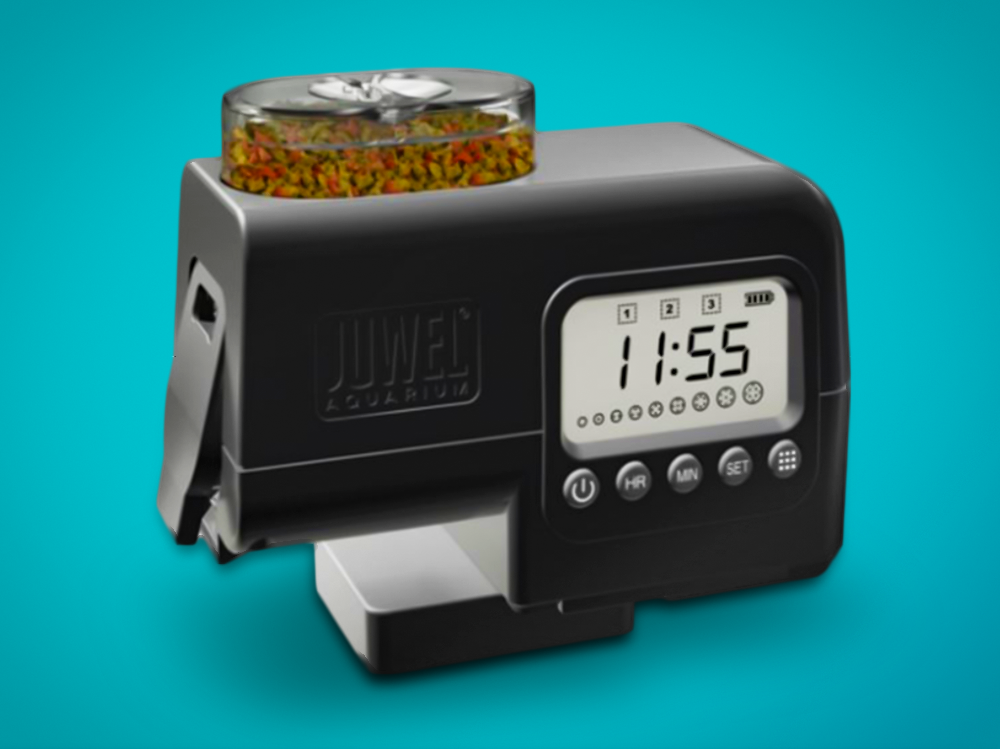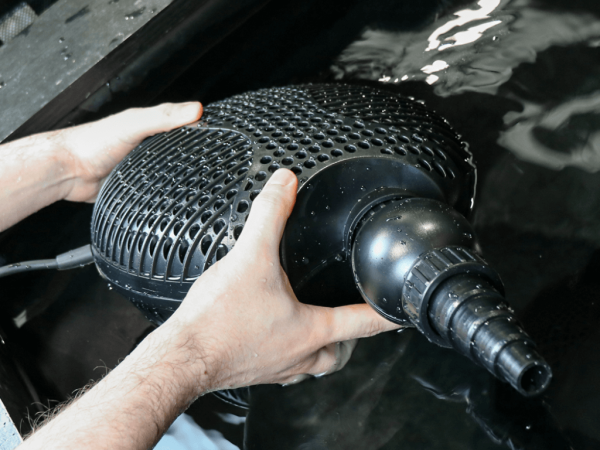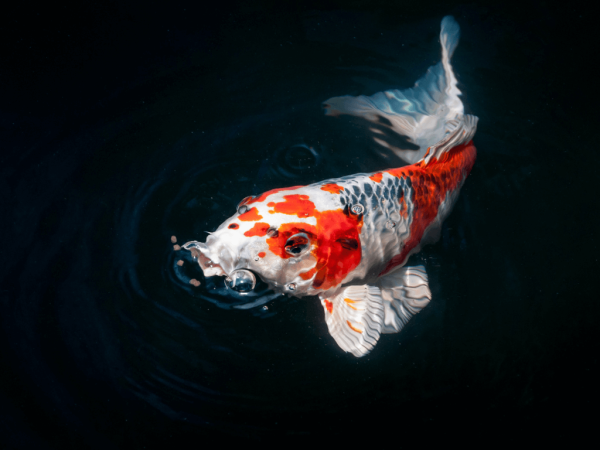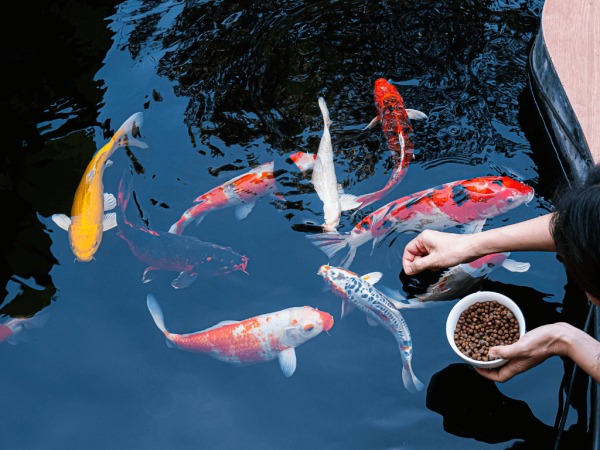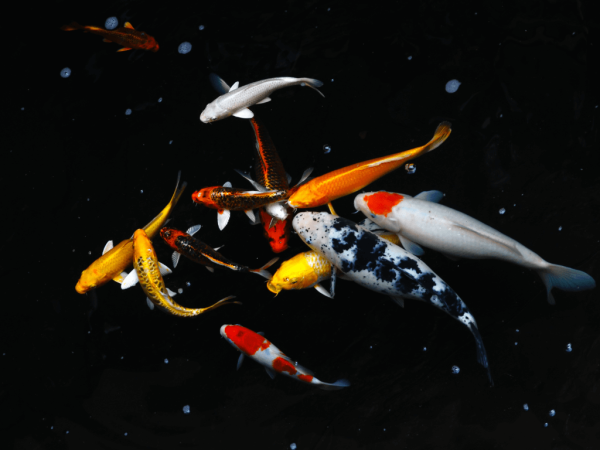How to choose an automatic fish feeder
Automatic fish feeders are the best solution for feeding your aquarium fish for you if you go away.
They can deliver a set amount of food at the same time each day, or even several times a day, keeping your fish just as well-fed as when you’re there to feed them yourself.
A must-have for fishkeeping holiday-makers automatic feeders are even useful for extra feeds when you’re at work, helping to keep weight and growth on aquarium fish like Anthias, Discus or fish fry, that need to feed several times throughout the day.
How automatic fish feeders work
Most Automatic fish feeders work in the same way. They consist of a rotating drum where you put the food, a motor that turns the drum, and a timer that turns the motor on and off. You set the timer to feed the fish at say 1pm in the afternoon, set the time on the timer and when 1pm comes the motor turns the drum and fish food falls out through a little window in the rotating drum, into the tank below.
Sit-on or clamp-on automatic fish feeders
Automatic feeders must be placed directly over the aquarium, so the first deciding factor is how you are going to fit it onto the tank. Flat-topped aquariums with lid flaps may already have a hole for an automatic feeder, or you could make a hole, or remove one of the lid flaps and place the feeder so it hangs just over the edge and releases food into the water below.
If the tank has a wooden, piano top style hood and cover glasses the feeder can be placed in the hood, with one cover glass slightly open.
If the aquarium is completely open-topped and rimless, make sure the automatic feeder comes with a clamp for vertical tank wall mounting. Some feeders offer both methods.
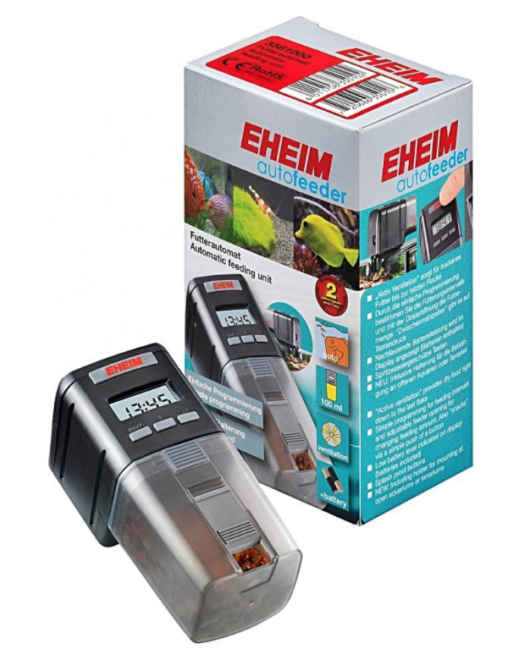
Decide how many times you want to feed
Automatic feeders can feed once, twice, three or 4 times per day, depending on the make and model. If once a day is plenty then any feeder will do but if you want up to four feeds per day, make sure your prospective feeder can be programmed to do that.
Decide how much you want to feed
Set a practice run with your auto fish feeder to make sure you feed the right amount of food each time. Feed too much while you’re away and you could come back to a water quality disaster. Set the feeder up to feed while you’re there for a few days first, or place it on a table and get it to dispense the food onto a piece of paper so you can see how much it will release each time.
Added extras
Most feeders use batteries although some can use a mains cable for unlimited dispensing. Some may also use a small fan ventilation system to (try,) to keep the food dry and not full of moisture - a risk with any feeder over a tropical fish tank. Wet food goes off and sticks to the inside of the drum. They may also have a manual feed button you can press when there to dispense some extra food or to try out how much food it releases from the food container each time.
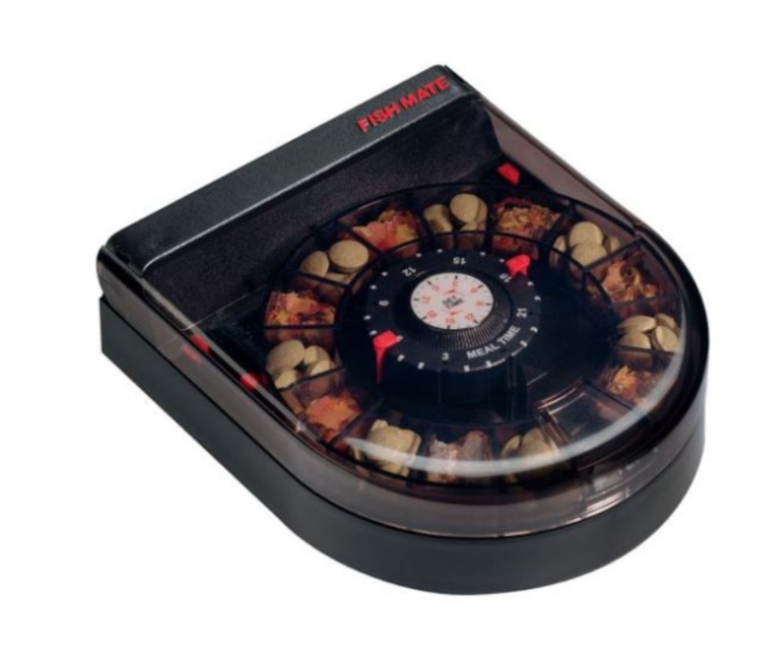
How long does an automatic fish feeder last?
An automatic feeder will dispense food when you tell it to every day until it runs out of food in the drum, or the batteries run out. But food would run out first. Most auto feeders will comfortably cover a 14 day holiday period, or much longer if only small amounts of food were fed, and only once per day.
The exception is the Fishmate Automatic Fish Feeder, which can feed fish tanks for a maximum of 14 days due to the way it’s designed. You could also place different dry foods into each of its 14 compartments and alter the amount in each daily compartment too. It's long established and one of the best automatic fish feeders.
What food is best for an automatic feeder?
Small pellets or granules are best for auto feeders and rotating barrel fish feeders as they roll around well as the drum rotates and fall through even a small window in the drum, and into the tank below. Flake can be used but large flakes may not fall through the fish feeder window on the first few rotations, and the amount of flake and portion sizes the feeder dumps each day may alter. Flake dry food is also more prone to high moisture ingress and sticking together.
Frozen or liquid foods should not be fed as they will go off.




